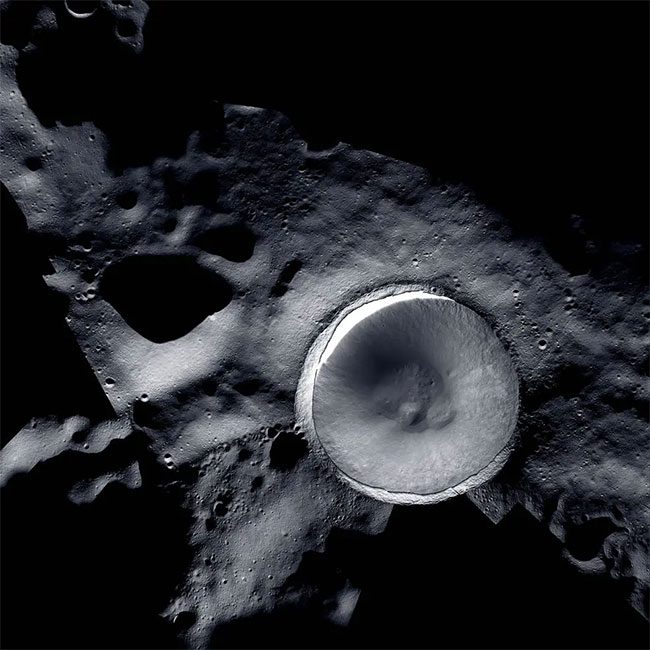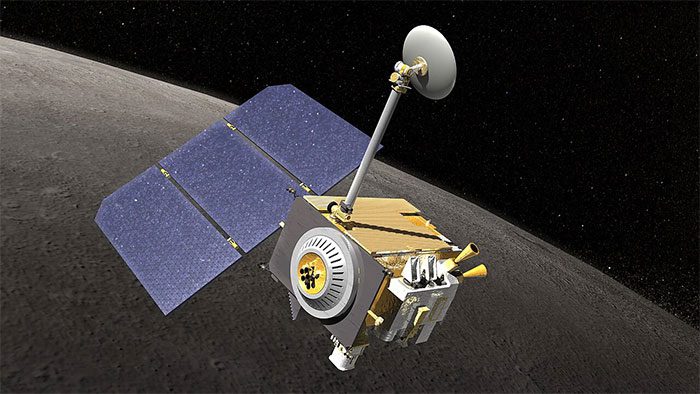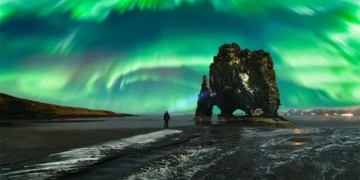NASA has just released a highly detailed image of the interior of the Shackleton impact crater located in the southern polar region of the Moon. The American space agency provided the image on September 19, 2023.
The image showcases the technological prowess of two cameras orbiting the Moon, working in tandem to unveil unprecedented details about the southern pole of Earth’s natural satellite.

Close-up of the Shackleton impact crater at the Moon’s southern pole. Source: Image created by LROC (Lunar Reconnaissance Orbiter Camera) and ShadowCam with images provided by NASA/KARI/ASU.
Among these is the LROC (Lunar Reconnaissance Orbiter Camera), which has been operating since 2009. The LROC system consists of three cameras (two narrow-angle cameras and one wide-angle camera) mounted on NASA’s Lunar Reconnaissance Orbiter (LRO) to capture high-resolution images of the Moon’s surface.
Additionally, there is ShadowCam, a NASA instrument onboard the Danuri spacecraft from KARI (Korea Aerospace Research Institute), which was launched in August 2022. ShadowCam was developed by the Malin Space Science Systems (USA) and Arizona State University (USA).
The Combined Technological Strength of NASA
Important: This image was created for the first time using two different NASA cameras orbiting the Moon, providing a fresh perspective on terrain that may facilitate future Moon missions.
Details: It depicts the interior of the Shackleton impact crater, which is approximately 3,200 meters deep and 19,300 meters wide. Shackleton has been selected as one of the potential landing sites for NASA’s Artemis III mission.
Shackleton: Named after the Irish-born British Antarctic explorer Sir Ernest Shackleton, this unexplored impact crater features extreme yet contrasting conditions.
Like many other polar craters on the Moon, the interior of Shackleton is perpetually shrouded in darkness due to the Moon’s slight tilt on its axis. This results in the peaks along the crater rim receiving almost continuous sunlight.
How It Works: This image is a product of combining data from the Lunar Reconnaissance Orbiter Camera (LROC) and a new device called ShadowCam.
While LROC has captured stunning images of the Moon since 2009, it was not designed to photograph lunar surfaces with minimal light.
However, ShadowCam is 200 times more sensitive than LROC and can operate successfully in extremely low-light conditions, revealing features and terrain details that LROC cannot detect.
With each camera optimized for specific lighting conditions near the Moon’s poles, analysts combined images from both instruments to create a comprehensive visual map of the terrain and geological features of both the brightest and darkest areas of the Moon.

NASA’s Lunar Reconnaissance Orbiter (LRO) – home to LROC (Lunar Reconnaissance Orbiter Camera). (Photo: NASA).
Future Exploration: The name Shackleton is fitting for this extremely cold, dark, and mysterious impact crater, akin to a ‘hellhole,’ as scientists have been intrigued by its frigid conditions for years.
Ancient materials, dating back billions of years, could provide researchers with new insights into the evolution of the Moon and our Solar System.
Located thousands of meters deep within Shackleton, where sunlight has never reached, temperatures average around -183°C. Such temperatures are cold enough to form ice and other frozen volatile substances.
Scientists believe that layers of ice have existed on the Moon for millions or even billions of years, and the potential to study samples could enhance our understanding of how the Moon and our Solar System have evolved.
These ice deposits could also serve as a vital resource for exploration, containing hydrogen and oxygen that could be utilized as rocket fuel or in life support systems.
A more comprehensive map of the Moon’s southern polar region is invaluable for future surface exploration efforts, such as NASA’s VIPER (Volatiles Investigating Polar Exploration Rover) and Artemis missions, which aim to return humans to the Moon’s surface and establish a long-term presence there.





















































